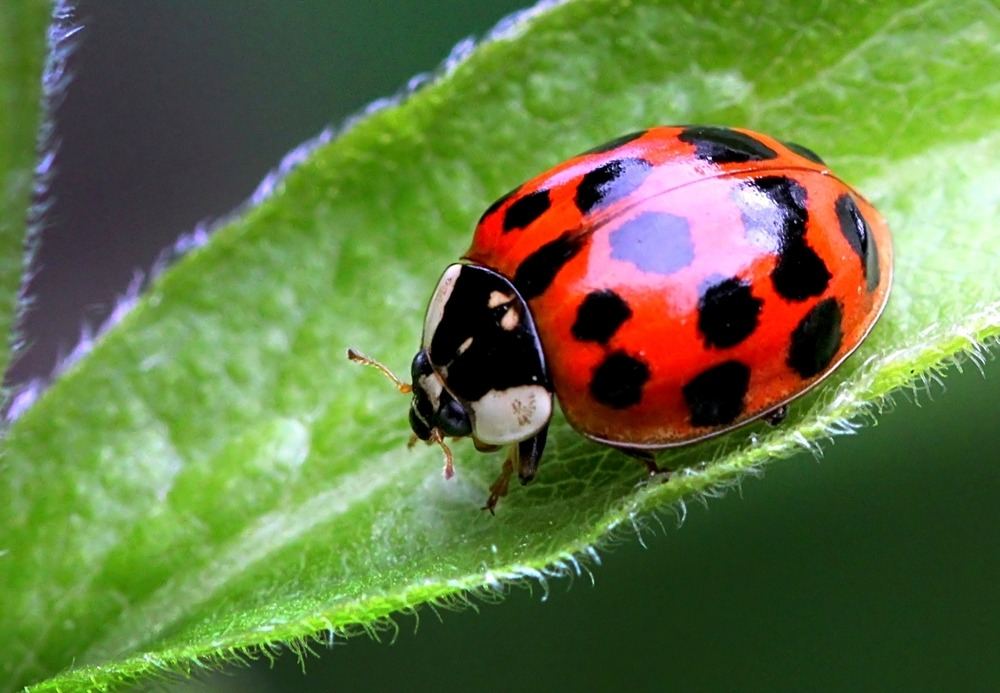Ladybugs are the cutest creatures of god. They’re more often seen in green areas or cold places, especially in leaves and grass. Ladybugs primarily feed on aphids and other soft-bodied pests, making them beneficial for natural pest control in gardens and crops. They also consume mites, scale insects, and pollen.
Ladybugs serve as organic pest controls by feeding on these insects, preserving the equilibrium in agricultural and garden environments. But that's not all! Discover more about the amazing snacks that our tiny ladybug buddies like by reading on.
What is a Ladybug?
The Ladybugs, or, in Europe, the Ladybird beetle, is not a bug, but a beetle. They fall under the Coccinellidae family. The world sums up to almost 6,000 species of ladybugs. The North American species number approximately 450.
In the minds of most people, an image of a ladybug comes as a small oval insect which is red spotted with black on the body, and black on the head, and the region that lies just behind the head- the pronotum. To protect its head, the ladybug can move the head under the pronotum partially or completely.
To do this, many of the ladybugs have markings that resemble a head. The length of ladybugs is 1/16 inch to 3/8 inch. Below the colorful wing covers, they possess two wings.
What Types of Foods Do Ladybugs Eat?
Ladybug feeds on the eggs of large crop pests, Colorado Potato Beetle and European Corn Borer eggs. They also eat other eggs that are found.
Adult ladybugs do not feed on bugs only. The adults suck nectar and pollen, some adults general feeding on mildew which grows on the plants and the pollen but the larvae are pure carnivores. Every ladybug will feed on other ladybug eggs, larvae, and pupae, particularly when prey is limited.
They enjoy eating the following food
Leaves
Though ladybugs are in general renowned because of their predatory habits on aphids and other little insects, just a couple of species of ladybugs incidentally switch to eating leaves as an added food supply. Leaves are, however, not a primary nutritional source of most ladybugs since they are of little nutritional value as compared to the nutritious insects they normally feed on, which are rich in protein. The usefulness of leaves is that they serve as a habitat and a source of water, which is very valuable.
Fungus
Fungus is the most likely food for ladybugs. Fungi provide essential nutrients, including proteins, vitamins, and essential fatty acids. These ladybugs are typically found in temperate and subtropical regions such as the damp, forested areas of Europe and North America, where mushrooms and other fungi are abundant.
Nectar
The sweet and nourishing fluid that is manufactured by plants is called Nectar. Nectar plays a very vital role in body fueling as a source of food to ladybugs, as it supplies them with body sugars as a source of body energy. Although they are better known for their diet of aphids and other pests, various species of ladybugs also feed on nectar as a source of nutrition, especially when the usual diet is in short supply. As an example, the seven-spotted ladybug, Coccinella septempunctata, which is distributed overall Europe and in some parts of Asia, frequently feeds on the nectar of different wildflowers.
How Much Do Ladybugs Eat?
Ladybugs are voracious consumers of aphids, playing a valuable role in natural pest control and crop health! An individual ladybug can devour up to 5,000 aphids during its lifetime, which spans from a few months to over a year, depending on the species and environmental conditions. The foraging habits of these beetles are highly effective, as they actively seek out aphid colonies on plants, consuming them with remarkable efficiency. This predatory behavior not only helps in maintaining the balance of aphid populations but also benefits agriculture by reducing the need for chemical pesticides.
Are Some Ladybugs Pests?
Every group has some ineffective agents, and ladybugs are not an exception. The majority of ladybugs feed on aphids and other microscopic insects and mites.
Some of them affect important plant pests. Mexican bean beetle ( Epilachna varivestis ) is a type of beetle that feeds on bean seeds and plants. Bean growers have a problem of ladybug infestation. Squash beetles, too, are ladybugs, which are harmful to farmers.
Their subfamily named Epilachninae, is a group of vegetarian ladybugs that like to eat vegetation and flowers. They also feed on fungi like mushrooms and mildew.
Nevertheless, because they are partial towards plants, they may become a nuisance to the extent that they cause the death of plants. They are attracted to some of these plants like calendula, geranium, dill, garlic, cilantro, parsley, and mint.
Frequently Asked Questions (FAQs)
1. What do ladybugs eat?
- Aphids
- Mites
- Pollen
- Nectar
- Mealybugs
- Insect bugs
- Fruit flies
- Mildew
- Fungus
2. What are the types of ladybugs?
- Ten-spotted ladybugs (Bothrocalvia pupillata)
- Two-spotted ladybugs (Adalia bipunctata)
- Seven-spotted ladybugs (Coccinella Septempunctata)
- Asian lady beetle (Harmonia axyridis).
- Convergent Lady Beetle (Hippodamia convergens)
3. Do ladybugs eat spiders?
Yes, Ladybugs eat spiders small enough for them to attack and subdue. They are especially prone to eat spiders and insects when aphids are in short supply.



